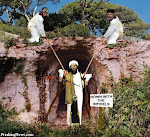
-Discussions in George Bush’s team revolved around the timing of the coup.
One option under consideration was to synchronize it with Georgia’s aggression against South Ossetia in order to demonstrate US assertiveness over all azimuths, but the idea was found too extreme even by the staunchest hawks given the upcoming elections in the US.
-The oil crisis that erupted in Honduras finally convinced Zelaya to change course.
US companies, which monopolized the business of importing oil to the country, manipulated prices and created an artificial shortage in the fuel supply.
Protests and strikes which left Honduras on the verge of a full-blown crisis made Zelaya temporarily expropriate oil storages owned by US companies.
As the next step, he forged closer ties with ALBA leaders and signed several deals with Venezuela to buy oil at discount prices, broaden trade between the two countries, and jointly modernize transit infrastructures.
One of Zelaya’s priority projects was to construct with the assistance of the ALBA countries a modern airport on the site occupied by the US Soto Cano Air Base....The threat of losing another strategic airbase in Latin America made Washington hurry up with the coup.
-Throughout 2008 Negroponte was building in Central America an intelligence and diplomacy network charged with the mission of regaining the positions lost by the US as well as of neutralizing left regimes and ALBA integration initiative.
At present the US ambassadors to Latin American countries – Hugo Llorens to Honduras, Robert I. Blau to El Salvador, Stephen G. McFarland to Guatemala, and Robert J. Callahan to Nicaragua - are Negroponte’s people.
All of them have practical experience of destabilizing and subverting political regimes unfriendly to the US, launching propaganda campaigns, and creating fifth columns in the form of various NGOs.
***************************
See also: What is the SOA?
~

















No comments:
Post a Comment